Fantasia 2016, Day 3: Alien Spirits (Parasyte: Part 1 and Part 2, La Rage du Démon, For the Love of Spock, and Terraformars)
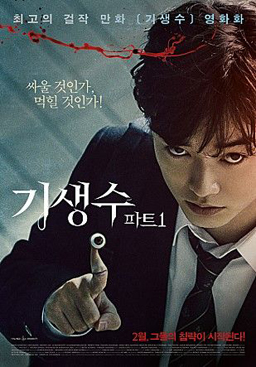 Saturday, July 16, began early for me. I headed downtown to the Hall Theatre for an 11:05 showing of Parasyte: Part 1 (Kiseiju), the first instalment of a Japanese science-fiction–horror duology. After that I planned to head to the festival screening room; I hoped to see La Rage du Démon (Fury of the Demon), a French horror mockumentary that mixes film pioneer Georges Méliès, occultism, and legends of mass hysteria into the story of a cursed silent movie. Then I’d head back to the Hall for a showing of For the Love of Spock, a documentary about Leonard Nimoy and his most famous role, hosted by the director, Nimoy’s son Adam. I’d wrap up the night with Terraformars, a science-fiction film directed by Takashi Miike about humans battling genetically-modified cockroaches on the surface of Mars. Miike would be present to host a question-and-answer session and receive Fantasia’s Lifetime Achievement Award.
Saturday, July 16, began early for me. I headed downtown to the Hall Theatre for an 11:05 showing of Parasyte: Part 1 (Kiseiju), the first instalment of a Japanese science-fiction–horror duology. After that I planned to head to the festival screening room; I hoped to see La Rage du Démon (Fury of the Demon), a French horror mockumentary that mixes film pioneer Georges Méliès, occultism, and legends of mass hysteria into the story of a cursed silent movie. Then I’d head back to the Hall for a showing of For the Love of Spock, a documentary about Leonard Nimoy and his most famous role, hosted by the director, Nimoy’s son Adam. I’d wrap up the night with Terraformars, a science-fiction film directed by Takashi Miike about humans battling genetically-modified cockroaches on the surface of Mars. Miike would be present to host a question-and-answer session and receive Fantasia’s Lifetime Achievement Award.
It would be a full day of films, and it began, as I said, with Parasyte. I would see the second film — in English Parasyte: Part 2, in romanised Japanese Kiseiju Kanketsu-hen — on Sunday morning, so I’ll write here about the two films together. Both were directed by Takashi Yamazaki from scripts Yamazaki wrote with Ryota Kosawa based on the manga by Hitoshi Iwaaki (an English translation of the manga came out from Tokyopop and is now in print from Kodansha Comics USA; an anime version, Parasyte -the maxim-, ran in Japan in 2014 and 2015). The films do a reasonable job of standing alone, but the last shots of Part 1 explicitly set up Part 2, while there’s so much story in Part 1 that I’d have to think Part 2 would suffer from not having seen it. I suspect Part 2 would end up understandable, but the characters perhaps even more than the plot would feel flattened. The first film runs an hour and three-quarters and the second two hours, so they both individually have the length of full stories. But there’s no doubt to me that they benefit from being viewed fairly close together.
 The first film opens with a voice-over from a character musing about humanity’s relationship to nature and whether a reduction in the human population would mean a reduction in the number of environmental disasters. Theme thus established, the plot unfolds smartly: entities of unknown origin attack a number of sleeping human beings, entering their ear canals, killing their hosts, and taking control of their bodies — which the entities, the parasytes, can then reshape at will into tentacles or blades or whatever they like. In one case, though, the process gets botched. A high-schooler named Shinichi (Shoto Sometani) happened to go to sleep wearing his earbuds, and the parasyte that tried to get at his brain is forced to settle for invading and controlling his right hand. Shinichi survives the process and comes to a wary meeting of the minds with the parasyte, who names itself Migi (“Right”).
The first film opens with a voice-over from a character musing about humanity’s relationship to nature and whether a reduction in the human population would mean a reduction in the number of environmental disasters. Theme thus established, the plot unfolds smartly: entities of unknown origin attack a number of sleeping human beings, entering their ear canals, killing their hosts, and taking control of their bodies — which the entities, the parasytes, can then reshape at will into tentacles or blades or whatever they like. In one case, though, the process gets botched. A high-schooler named Shinichi (Shoto Sometani) happened to go to sleep wearing his earbuds, and the parasyte that tried to get at his brain is forced to settle for invading and controlling his right hand. Shinichi survives the process and comes to a wary meeting of the minds with the parasyte, who names itself Migi (“Right”).
The first film follows them as other parasytes begin to make themselves felt in society, and as one network of the entities begins to take a deeper interest in Migi and Shinichi. The first movie shows the slow infiltration of the parasytes into Shinichi’s daily life, and we see things sliding into chaos, tragedy, and violence. The second movie takes that groundwork and operates at a larger level, with Shinichi changed by events of the first movie and facing greater and greater challenges.
Tonally the movies shift easily from science-fiction to horror to suspense and back again, developing a specific feel of paranoia violently interrupted by violence and gore. At the same time, there’s a distinct YA feel to both movies. To me, YA stories aren’t just (usually) about young adults, but (again, usually) tell their stories from their own perspective as opposed to that of an older person looking back on their life. So here the story is Shinichi’s story, with him clearly at the centre of events and things told largely from his point of view.
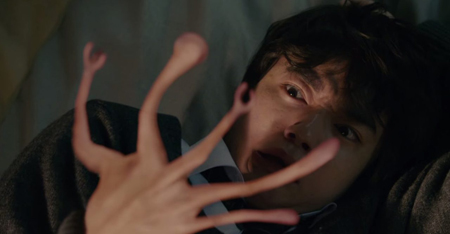 That said, the amount of blood and horror imagery makes it less appropriate for very young viewers. In fact, I came away from the two films thinking of nothing so much as a twenty-first century version of Gremlins (the first horror-inflected movie, not the second slapstick comedy). The plot’s similar: a cute monster, Mogwai or Migi, helps a human youth fight much scarier monsters. And there’s a similar mix of cartooniness and horror to these stories. The Parasyte films are much bloodier than Gremlins, but then think that we’re thirty years on, with a generation perhaps more used to onscreen violence. None of which is to say the Parasyte films are in any way close copies of the earlier movie. Notably, they have less humour, a more serious environmental subtext, and a grander scale.
That said, the amount of blood and horror imagery makes it less appropriate for very young viewers. In fact, I came away from the two films thinking of nothing so much as a twenty-first century version of Gremlins (the first horror-inflected movie, not the second slapstick comedy). The plot’s similar: a cute monster, Mogwai or Migi, helps a human youth fight much scarier monsters. And there’s a similar mix of cartooniness and horror to these stories. The Parasyte films are much bloodier than Gremlins, but then think that we’re thirty years on, with a generation perhaps more used to onscreen violence. None of which is to say the Parasyte films are in any way close copies of the earlier movie. Notably, they have less humour, a more serious environmental subtext, and a grander scale.
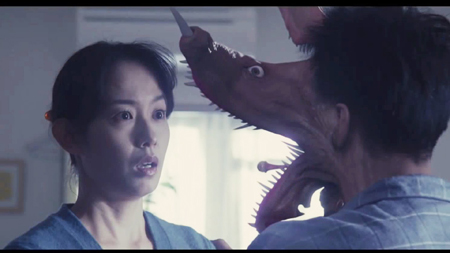 The division between the two parts of Parasyte is very well-handled, with just the right amount of plot allotted to each. More than that, the kinds of plots and sub-plots in each film sit well with each other and build naturally. Rudimentary hints in Part 1 blossom in Part 2. There’s a different shape to events in the two movies: the first dealing more closely with Shinichi, the second expanding to give a broader sense of the parasytes invading society. But the story never gets too big, remaining focussed on Shinichi even as it implies a larger world. Rules of how the paraystes work are expanded on, with new threats emerging as logical variations on what we’ve learned.
The division between the two parts of Parasyte is very well-handled, with just the right amount of plot allotted to each. More than that, the kinds of plots and sub-plots in each film sit well with each other and build naturally. Rudimentary hints in Part 1 blossom in Part 2. There’s a different shape to events in the two movies: the first dealing more closely with Shinichi, the second expanding to give a broader sense of the parasytes invading society. But the story never gets too big, remaining focussed on Shinichi even as it implies a larger world. Rules of how the paraystes work are expanded on, with new threats emerging as logical variations on what we’ve learned.
I did feel some of the mechanical aspects of the plot were underdeveloped. An amoral parasyte detector introduced in the second movie is oddly underused in the main plot, while an epilogue after the climactic action setpiece is overlong. Coincidences sometimes move the story along, as when Shinichi’s mother happens to be in just the right place at just the right time. More troubling, much is allowed to happen offscreen. Certain discoveries about the nature of the parasytes, including one that sets up the climax of the first film, are introduced with no set-up and then left unexplored. The discovery I’ve mentioned in the first movie seems like it ought to have made the parasyte detector of the second movie irrelevant, for example. So by the end of Part 2 Shinichi’s story is clearly done, but one does wonder about much of the rest of the world. Some loose ends are left.
 Still, the overall movement of story is clear and often quite clever. There’s a nice fake-out in Part 2 when what looks like a build-up to a major action set-piece instead develops more quickly and in a different direction than we might expect, helping to establish a major antagonist. A complex sub-plot about politics within the parasyte network opposing and studying Shinichi works, and makes a strong contrast with the realm of human politics. The plot, in other words, reflects the theme: nature turning the tables on humanity.
Still, the overall movement of story is clear and often quite clever. There’s a nice fake-out in Part 2 when what looks like a build-up to a major action set-piece instead develops more quickly and in a different direction than we might expect, helping to establish a major antagonist. A complex sub-plot about politics within the parasyte network opposing and studying Shinichi works, and makes a strong contrast with the realm of human politics. The plot, in other words, reflects the theme: nature turning the tables on humanity.
It’s a simple idea, but works well. Migi, studying the internet, hears a reference to the devil and reports that “the closest life-form I’ve found is homo sapiens.” The way human and non-human worlds are bound together drives the movie, setting up crucial late scenes at a zoo and a trash incinerator, both locations that reflect on human attitudes to nature. Similarly, almost all of both films take place entirely within a city, emphasising the unnaturalness of modern life.
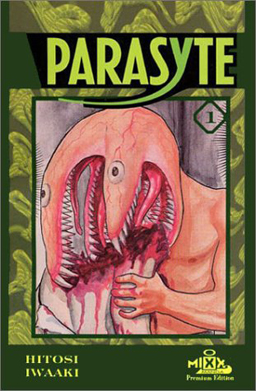 I was in fact struck by the way urban spaces were used in both films — there’s an almost Ballardian eye for desolate places, for the undersides of bridges and disused back rooms and buildings like concrete bunkers. Architecture is used to build atmosphere, a modern kind of horror. It feels appropriate that the highest political office in the human world that we see is mayor: the head of the city, the master of the sprawl infested by parasytes.
I was in fact struck by the way urban spaces were used in both films — there’s an almost Ballardian eye for desolate places, for the undersides of bridges and disused back rooms and buildings like concrete bunkers. Architecture is used to build atmosphere, a modern kind of horror. It feels appropriate that the highest political office in the human world that we see is mayor: the head of the city, the master of the sprawl infested by parasytes.
I’d say also that in general the visuals are very strong, cool if understated, nicely unifying the tonal variety of the films. There is a feel here of a kind of slick competence in tale-telling: the rhythms of editing and choice of camera angles aren’t obtrusive but always move the story forward clearly. The performances are strong, as well, notably the human parasytes whose body language conveys a clear alienness — the way they stand relative to each other, the way their eyelines don’t sync up, the way they don’t move like humans but like some other thing wearing human forms. The human supporting cast doesn’t always fare so well; Shinichi’s love interest Satomi (Ai Hashimoto, star of Wonderful World End) is underwritten, though she is given the chance to show some resourcefulness, and the relationship between her and Shinichi does develop very nicely across the two films.
But the standout performance has to be Sometani, the centre of both films, who conveys Shinichi’s growth admirably. Shinichi’s character development comes through in Sometani’s acting. He’s not the same person at the end of the first movie as he was at the start, and then a different person again by the end of the second movie. Sometani’s playing what’s clear in the script, as the story shows us how Shinichi grows up. Occasionally the script’s perhaps too clever — having become a parasyte hunter, Shinichi tells Migi early in the second movie that “When I’ve honed my technique I’ll go kill the boss,” which is just exactly how you’d expect a game-playing teen to frame his situation.
 It’s fair to say that the Parasyte movies are entertainments that happen to be built around a powerful theme, but the flip side is that they’re very well-done entertainments — if you don’t mind a bit of blood-spatter, you’ll find they never fail to entertain. The world of the story is slightly underdeveloped, and the plot mechanics are sometimes strained. But the films are carried by an engaging lead, by the cartoonish yet engaging design of Migi, and by a story structure that adroitly mixes the personal and the social, horror with science-fiction and with suspense. The second film in particular nicely develops and concludes the story begun with the first. They’re good solid movies about a young hero in over his head, facing tragedy and adventure.
It’s fair to say that the Parasyte movies are entertainments that happen to be built around a powerful theme, but the flip side is that they’re very well-done entertainments — if you don’t mind a bit of blood-spatter, you’ll find they never fail to entertain. The world of the story is slightly underdeveloped, and the plot mechanics are sometimes strained. But the films are carried by an engaging lead, by the cartoonish yet engaging design of Migi, and by a story structure that adroitly mixes the personal and the social, horror with science-fiction and with suspense. The second film in particular nicely develops and concludes the story begun with the first. They’re good solid movies about a young hero in over his head, facing tragedy and adventure.
On Saturday after seeing the first part of Parasyte I went to the screening room, where I sat down with the French film La Rage du Démon. It’s fiction in the form of a documentary which investigates the strange story of a cursed film. In 2012, runs the tale, there was a screening of a short from the earliest days of cinema, a movie called La Rage du Démon. Believed lost decades before, some thought it had been created by none other than Georges Méliès, stage magician and inventor of screen special effects. But at the 2012 screening, as at the only other two recorded presentations of the film, the audience went mad and, gripped by a strange motiveless fury, all the viewers attacked each other. The survivors recall only disjointed images. What caused this violence? Some sort of subliminal imagery? A chemical oddity of the physical film reels? Or was there a curse upon the movie?
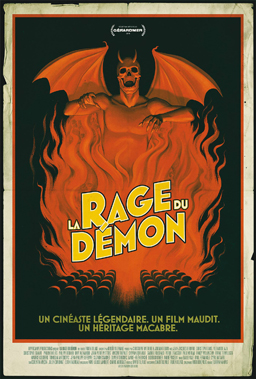 Written and directed by Fabian Delage, La Rage du Démon (the faux-documentary, not the fictional film it describes; from here on I’ll call the first La Rage, the second Démon) is quick, an even 60 minutes long, and convincing. It presents a lot of information very swiftly, some of it is accurate history and some of it invented. The invention is uniformly plausible, and fits seamlessly into the background of early cinema. That background itself is very well evoked, both the sense of innovators in the nineteenth century exploring new technology and new kinds of art, and the sense we have in the twenty-first century of the cinema traditions that developed from those early experiments — the world of viewers and critics and historians.
Written and directed by Fabian Delage, La Rage du Démon (the faux-documentary, not the fictional film it describes; from here on I’ll call the first La Rage, the second Démon) is quick, an even 60 minutes long, and convincing. It presents a lot of information very swiftly, some of it is accurate history and some of it invented. The invention is uniformly plausible, and fits seamlessly into the background of early cinema. That background itself is very well evoked, both the sense of innovators in the nineteenth century exploring new technology and new kinds of art, and the sense we have in the twenty-first century of the cinema traditions that developed from those early experiments — the world of viewers and critics and historians.
The problem with the movie in a dramatic sense is that there’s no real meta element to the story. There’s no involvement for the audience. The cursed short film is a wonderful idea but is never presented as any kind of active threat. There’s no sense that the viewer’s watching a story unfold that threatens anyone in the present, no identification with the victims of the curse or with any character the film builds. This is a movie that unfolds entirely in the past tense. A vague hint that each showing of the cursed short precedes a time of great horror in the world is too minimal to really feel compelling. There’s a level on which, unlike its fictional namesake, the actual movie La Rage du Démon refrains from stirring any deep well of terror, and resists being viewed as anything more than an intellectual curiosity.
Which is not to say that it’s a bad or unrewarding film. In many ways it’s extremely well done, a fascinating reverie around the themes of Méliès and of cinema and of the occult. It’s just not immediately gripping in the way one might expect of a horror film — if this really is a horror film. One might perhaps as well call it a jeu d’esprit, with most of the varied meanings of esprit implied.
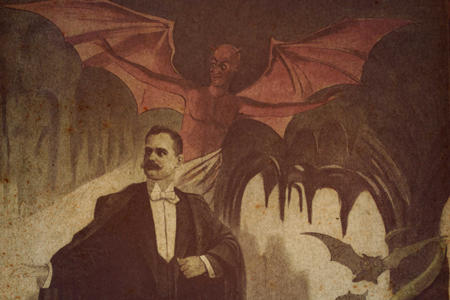 There’s an almost novelistic feel to the film’s structure, as it opens with shaken critics recalling their night of terror in 2012 and then moves back in time to introduce Méliès and the mysteries surrounding the first showing of the film in 1897. We then proceed roughly forward through a series of well-developed tangents that slowly add up and feed into each other as the details of the cursed film emerge: how it was shown once more, in 1939, then lost, then recovered for the 2012 showing by the mysterious Edgar Allan Wallace. Above all we learn about the mysteries of Méliès and of the provenance of the film. Was it made by Méliès, or by a strange figure named Victor Sicarius, an occultist who dabbled in moviemaking in association with the great Méliès?
There’s an almost novelistic feel to the film’s structure, as it opens with shaken critics recalling their night of terror in 2012 and then moves back in time to introduce Méliès and the mysteries surrounding the first showing of the film in 1897. We then proceed roughly forward through a series of well-developed tangents that slowly add up and feed into each other as the details of the cursed film emerge: how it was shown once more, in 1939, then lost, then recovered for the 2012 showing by the mysterious Edgar Allan Wallace. Above all we learn about the mysteries of Méliès and of the provenance of the film. Was it made by Méliès, or by a strange figure named Victor Sicarius, an occultist who dabbled in moviemaking in association with the great Méliès?
To ask the question is to answer it. Which is a general characteristic of the film: questions are asked, and immediately either answered or ignored. We are not given much information about the shadowy Mister Wallace (whose name is presumably coined from mixing Poe’s first and middle names with the detective novelist and scriptwriter of King Kong), but the exploration of Sicarius is deep and detailed. There isn’t much of a sense of mystery tying the film together, but it’s brief enough there doesn’t really have to be. The historical figures it evokes, like Méliès, don’t come across as terribly complex, while those it imagines don’t come alive as characters — a love story at the heart of events feels underdeveloped, a necessary gothic plot move to provide motivation.
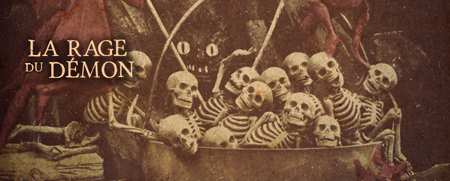 On the other hand, the evocation of the violence of the screenings of Démon is very good, with a focus on the sheer lack of comprehensibility of events: the bafflement of witnesses and survivors as they try to reconstruct events, try to link scattered memories of a man in obvious devil make-up with the emotions that swept over them. I think that sense of attempting to reconstruct what cannot be reconstructed is at the heart of the movie: this is a film about films, and about what happens in the act of viewing a film. About the emotions stirred in the magical shadowed space of a theatre where light flickers on a screen and we see ghosts projected into giants. That can be discussed and dissected, but not recreated — except, perhaps, in another film, a film just like this that takes film and film magic as its subject.
On the other hand, the evocation of the violence of the screenings of Démon is very good, with a focus on the sheer lack of comprehensibility of events: the bafflement of witnesses and survivors as they try to reconstruct events, try to link scattered memories of a man in obvious devil make-up with the emotions that swept over them. I think that sense of attempting to reconstruct what cannot be reconstructed is at the heart of the movie: this is a film about films, and about what happens in the act of viewing a film. About the emotions stirred in the magical shadowed space of a theatre where light flickers on a screen and we see ghosts projected into giants. That can be discussed and dissected, but not recreated — except, perhaps, in another film, a film just like this that takes film and film magic as its subject.
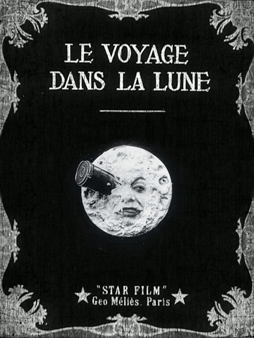 There is much implied here about truth and falsity. The structure of the fake documentary seems to grow naturally out of the figure of Méliès at its heart, the man who took a tool that seemed as though it could reproduce at least the appearance of reality and showed how it could be used as a tool of the unreal. La Rage reminds us that Méliès, the stage magician, began his showings by assuring the audience that what they were about to see was not true; that this was the era of audiences fleeing the projected image of a moving train. In a sense the whole film is a Mélièsian fable in more than one sense, with Méliès not just subject but inspiration.
There is much implied here about truth and falsity. The structure of the fake documentary seems to grow naturally out of the figure of Méliès at its heart, the man who took a tool that seemed as though it could reproduce at least the appearance of reality and showed how it could be used as a tool of the unreal. La Rage reminds us that Méliès, the stage magician, began his showings by assuring the audience that what they were about to see was not true; that this was the era of audiences fleeing the projected image of a moving train. In a sense the whole film is a Mélièsian fable in more than one sense, with Méliès not just subject but inspiration.
Conversely, the idea of Démon as a fraud, a movie claiming to be by Méliès but in fact a knock-off or counterfeit, implies another layer of trickery. It’s all magic shadows all the way down. At a certain point what is deceitful, what is fictional (a very different thing), and what is believed to be true all blend together. So the movie evokes the world of late nineteenth-century spiritualists and the ghosts they described, and then evokes the sense of a time when photography was used in magic, a magical technology with unknown capabilities. Spirit photography meets trick photography: we see primitive double-exposures created by Victorian-era psychics, and then photoshopped images of period photographs altered to include a character from La Rage’s narrative.
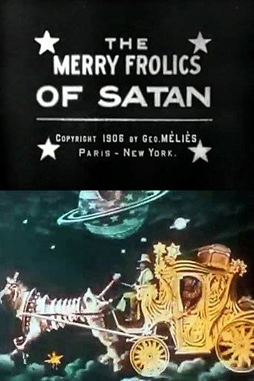 It is worth pointing out that the recreation of the late nineteenth century is very good on its own terms, in terms of the use of props, selection of interviewers, and the dressing of interview locations. An atmosphere of a century past is built up, credibly grounding a story that happens not to be true. The concrete sense of early film technology, the physicality of cameras and film, is very nicely established — as is the contrast with the unreal world of the projected image.
It is worth pointing out that the recreation of the late nineteenth century is very good on its own terms, in terms of the use of props, selection of interviewers, and the dressing of interview locations. An atmosphere of a century past is built up, credibly grounding a story that happens not to be true. The concrete sense of early film technology, the physicality of cameras and film, is very nicely established — as is the contrast with the unreal world of the projected image.
There is a profoundly logical sense to much of La Rage, then, a very precise and rational sense which is in perfect keeping with early horror stories. The movie is the intelligent, analytical sceptic who becomes slowly convinced of a world beyond our ken. Practical explanations for events are examined — chemical pathogens, subliminal images — then discarded as unworkable hypotheses. The impossible is eliminated until what remains, however improbable, must be the truth.
I am in fact surprised by how much is eliminated, or at least sidelined. I found myself waiting for a hint that would tie Sicarius, who allegedly was seen after his ostensible demise by hanging, to later events or to Edgar Allan Wallace. But if anything of that sort was intended I missed it. We’re left with loose ends, with probabilities, with a story we have projected back onto the past.
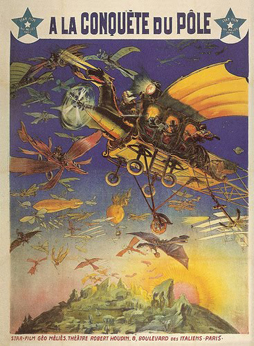 This may be appropriate for a movie that considers film as magic. Cinema expands perception into higher dimensions, it is suggested; it is a door of perception as Blake or Huxley would understand it, or at least opens such doors. Our souls are affected by film and we come to see more clearly after seeing ghost-images in motion. We grasp the real by the unreal. So one of the final ironies of this movie is that (we are told) now cinema enthusiasts pursue the once-again-lost Démon, seeking the satanic film as though on a “quest” for it “as if it were the Holy Grail.” Film has become legend. The occult has become the miraculous. La Rage, conversely, has moved from a horror film to a meditation on film and reality and narrative magic. It is not as immediately gripping as one might expect, but in the end it is involving, and deeply rewarding.
This may be appropriate for a movie that considers film as magic. Cinema expands perception into higher dimensions, it is suggested; it is a door of perception as Blake or Huxley would understand it, or at least opens such doors. Our souls are affected by film and we come to see more clearly after seeing ghost-images in motion. We grasp the real by the unreal. So one of the final ironies of this movie is that (we are told) now cinema enthusiasts pursue the once-again-lost Démon, seeking the satanic film as though on a “quest” for it “as if it were the Holy Grail.” Film has become legend. The occult has become the miraculous. La Rage, conversely, has moved from a horror film to a meditation on film and reality and narrative magic. It is not as immediately gripping as one might expect, but in the end it is involving, and deeply rewarding.
Appropriately enough, I left the screening room for the vast 750-seat Hall Theatre, which would be filled with a deeply appreciative audience for a more directly factual documentary. This was For the Love of Spock, a documentary about Leonard Nimoy and the character of Mister Spock. As I entered, the DJs from Concordia’s radio station CJLO, who play music before every showing at the Hall, began their pre-film set with the Star Trek theme, swiftly followed by extracts from Nimoy’s albums. It is cheap but accurate to say that their logic was inescapable.
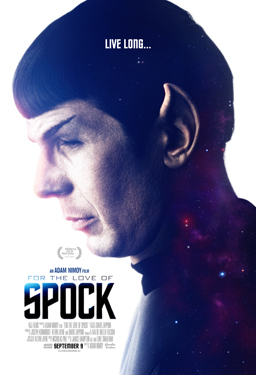 Adam Nimoy, Leonard Nimoy’s son and the director of the film, was introduced to the crowd and briefly discussed the making of the movie. He described how it was originally begun in November 2014 in collaboration with his father, and how he decided to continue with it after his father died four months later. He recalled editing the film at Paramount in a room virtually overlooking the studios where much of the original Star Trek was shot, and spoke of the year-long production process as he worked to edit all his material on Leonard Nimoy’s extensive body of work into the shape of a coherent story. Then, after a trailer for Star Trek VI, the film began.
Adam Nimoy, Leonard Nimoy’s son and the director of the film, was introduced to the crowd and briefly discussed the making of the movie. He described how it was originally begun in November 2014 in collaboration with his father, and how he decided to continue with it after his father died four months later. He recalled editing the film at Paramount in a room virtually overlooking the studios where much of the original Star Trek was shot, and spoke of the year-long production process as he worked to edit all his material on Leonard Nimoy’s extensive body of work into the shape of a coherent story. Then, after a trailer for Star Trek VI, the film began.
For the Love of Spock keeps to a roughly chronological approach, weaving together three main strands: Leonard Nimoy’s life as an actor, his creation of the character of Spock and ongoing involvement in Star Trek, and Nimoy’s relationship with his family. Interviews with various people connected to or inspired by Star Trek and Nimoy are supplemented with various archival recordings of Nimoy as well as family photographs. It’s a movie that likely could have been made by no-one else. Adam Nimoy has a background as a TV director — including episodes of Babylon 5 and Star Trek: The Next Generation — and here he’s made a thoroughly professional study that is also an intensely personal document. He balances the various aspects of his subject very well, neither spending too much time on family matters nor avoiding them.
The focus, of course, is primarily on Leonard Nimoy himself, particularly early in the film. We hear about his drive, how he supported himself in his early days with odd jobs, how he aspired to be another Lon Chaney. We see clips from his early acting jobs, and we get a sense that the film’s not going to avoid uncomfortable subjects when we see him playing an Indian character on Gunsmoke. Then there’s a clip from 1964, and a show called The Lieutenant, which was overseen by a producer named Gene Roddenberry. Roddenberry, impressed with Nimoy, wrote an ongoing role for him into the science-fiction show Roddenberry was soon to create. Nimoy had never held a job for more than two weeks when Roddenberry called him and courted him for the part, showing him models and concept artwork for Star Trek. “If I keep my mouth shut,” Nimoy later remembered thinking, “I might have a job here.”
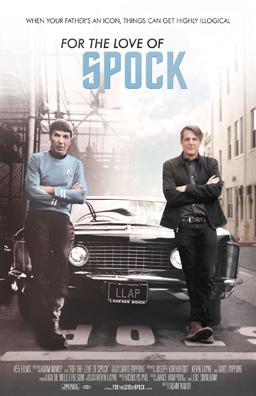 Some of the stories that follow about the development of the character of Spock are familiar: how the first Trek pilot was considered too cerebral by NBC, and how Spock’s pointed ears were airbrushed out in an early PR photo for fear of the character seeming too diabolical for the Bible Belt. Some stories are necessary, as for example a discussion of how the show’s make-up artist had to work out the precise shape of Nimoy’s prosthetic ears (and how he used to say that Nimoy would show up for work at 6:30 AM, and Mr. Spock arrived around 7:15). But some stories are more novel, at least to me, and particularly interesting were Nimoy’s reflections on his performance: how his acting approach changed when the captain was recast from the low-key Jeffrey Hunter to the more animated William Shatner, as Nimoy felt it better to pull back to provide a contrast to the lead. How a stage performance by Harry Belafonte impressed upon him the power of minimalism, so that he realised something as simple as a raised eyebrow could in the right circumstances be a striking dramatic gesture.
Some of the stories that follow about the development of the character of Spock are familiar: how the first Trek pilot was considered too cerebral by NBC, and how Spock’s pointed ears were airbrushed out in an early PR photo for fear of the character seeming too diabolical for the Bible Belt. Some stories are necessary, as for example a discussion of how the show’s make-up artist had to work out the precise shape of Nimoy’s prosthetic ears (and how he used to say that Nimoy would show up for work at 6:30 AM, and Mr. Spock arrived around 7:15). But some stories are more novel, at least to me, and particularly interesting were Nimoy’s reflections on his performance: how his acting approach changed when the captain was recast from the low-key Jeffrey Hunter to the more animated William Shatner, as Nimoy felt it better to pull back to provide a contrast to the lead. How a stage performance by Harry Belafonte impressed upon him the power of minimalism, so that he realised something as simple as a raised eyebrow could in the right circumstances be a striking dramatic gesture.
We are made to understand, then, how Nimoy perceived his role within the context of Star Trek overall. How he knew the raised eyebrow would stand out against everyone else’s gasps and starts of astonishment. Nimoy’s Spock would be a contrast to the rest of the crew, something that helped to establish the character as an outsider. Nicholas Meyer observes in an interview that Nimoy told him he never played Spock as emotionless but always as a man tightly restraining his emotions; it’s a good insight that helps explain some of the power of his performance (and something I personally feel has been lost on many later actors who’ve played Vulcans).
Nimoy had to adapt to sudden fame, to introducing the famous Vulcan salute in an episode and days later getting it back from passersby on the street. The necessity of an unlisted phone number took him by surprise, while answering fan mail became a family activity. There’s little gossip here about behind-the-scenes tensions on Star Trek, other than Nimoy staying in character as much as possible. There is video from a convention in the early 1970s showing him reading out a Variety review of the pilot, among gusts of laughter (particularly at the critic’s statement that “William Shatner appears wooden”), and this moment seems to particularly capture an attitude to his role that comes out over the course of the film — an appreciation of the power of the character along with the objectivity that comes from being at the untouched centre of events.
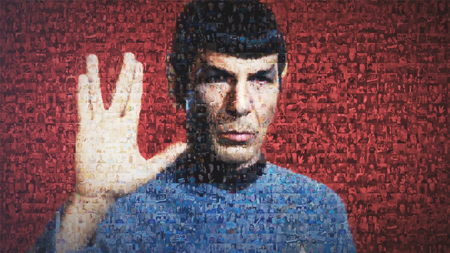 Nimoy is quoted or remembered as speaking about Spock as the image of an outsider. Nimoy’s Jewishness had relevance to this, but at the same time the general symbol is larger than the specific: almost everyone has a sense of themselves as an outsider, at least at some point in their lives, and so the character of Spock has resonance for almost everyone. One thing the film does very well is to depict how quickly the character attained the status now described as “iconic” — how, fifty years ago, even a not-well-watched network TV show affected the general consciousness. And then another thing is to show Nimoy’s awareness of that status, and how much the perception of the character meant to him.
Nimoy is quoted or remembered as speaking about Spock as the image of an outsider. Nimoy’s Jewishness had relevance to this, but at the same time the general symbol is larger than the specific: almost everyone has a sense of themselves as an outsider, at least at some point in their lives, and so the character of Spock has resonance for almost everyone. One thing the film does very well is to depict how quickly the character attained the status now described as “iconic” — how, fifty years ago, even a not-well-watched network TV show affected the general consciousness. And then another thing is to show Nimoy’s awareness of that status, and how much the perception of the character meant to him.
While the film deals quickly with his acting career after the cancellation of Trek, as well as his other artistic efforts, Spock remains central. Indeed the character was hardly out of his life for very long even after the TV show ended, and the film deals with some minor controversies that followed — Nimoy’s principled refusal to take part in the animated Trek show until Nichelle Nichols and George Takei were hired to take part as well, for example, or the disputes over visual rights to the character that imperilled his participation in The Motion Picture. One has the sense here of Nimoy’s strength of will and unwillingness to buckle under to business-as-usual injustice.
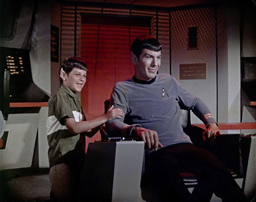 At the same time, he also underestimated the films. He genuinely believed Star Trek II would be the last gasp of the franchise, and agreed to do the movie only because Harve Bennett promised him the greatest death scene ever. That’s a little surprising, just because the film’s made it clear that Nimoy was aware of the phenomenon that Trek had become. In fact at about this point the movie begins to return more and more to the theme of fame contrasting with personal tensions — with Nimoy’s family life, with his workaholic tendencies, and with his depression and alcoholism. Narratively, it’s a good turn, paying off on earlier foreshadowing; it builds and deepens the sense we have of Nimoy’s character.
At the same time, he also underestimated the films. He genuinely believed Star Trek II would be the last gasp of the franchise, and agreed to do the movie only because Harve Bennett promised him the greatest death scene ever. That’s a little surprising, just because the film’s made it clear that Nimoy was aware of the phenomenon that Trek had become. In fact at about this point the movie begins to return more and more to the theme of fame contrasting with personal tensions — with Nimoy’s family life, with his workaholic tendencies, and with his depression and alcoholism. Narratively, it’s a good turn, paying off on earlier foreshadowing; it builds and deepens the sense we have of Nimoy’s character.
The perspective here is, again, probably one only Adam Nimoy could bring. The way he increasingly integrates his relationship with his father into the film is very strong, and the balance between chronology and coherency is well-managed. Adam keeps himself involved in Leonard’s story, but a relatively minor figure, a character who helps our understanding of who Leonard Nimoy was and what his priorities were as well as the character who’s telling the story. I was particularly touched by Adam’s discussion of an episode of the 1990s version of The Outer Limits he directed and in which Leonard acted, a remake of an episode from the 1960s series in which Nimoy had played the same role. Even more affecting is seeing Adam read aloud a letter Leonard wrote him about Leonard’s competitive relationship with his own father, with a small action figure of Spock on the table in the foreground of the image. It is a little stranger seeing him discuss slash fiction, but then we also get thoughtful comments from George Takei discussing what gay men saw in the relationship of Kirk and Spock.
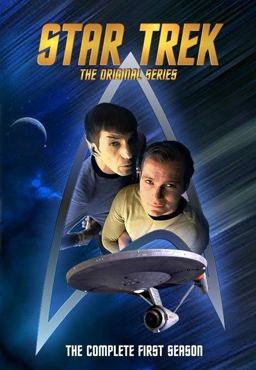 Not every interview was as insightful. In particular, some clips with Nimoy interviewing cast members of The Big Bang Theory provided little of value. Conversely, brief interviews with cosplayers at science fiction conventions added much more to the film. Generally, though, the movie was extremely well-illustrated with appropriate clips and photos, whether taken from the show or from home movies. In fact, I was struck by how well clips of the original Trek played on the big screen, with laugh lines getting laughs and drama emerging strongly. But then, it has to be said this was perhaps an ideal audience, clearly stacked with dedicated fans of the show — when an interview with J.J. Abrams played late in the film, the crowd loudly hissed him.
Not every interview was as insightful. In particular, some clips with Nimoy interviewing cast members of The Big Bang Theory provided little of value. Conversely, brief interviews with cosplayers at science fiction conventions added much more to the film. Generally, though, the movie was extremely well-illustrated with appropriate clips and photos, whether taken from the show or from home movies. In fact, I was struck by how well clips of the original Trek played on the big screen, with laugh lines getting laughs and drama emerging strongly. But then, it has to be said this was perhaps an ideal audience, clearly stacked with dedicated fans of the show — when an interview with J.J. Abrams played late in the film, the crowd loudly hissed him.
What remains from the film is the deep respect and love Leonard Nimoy’s coworkers and family had for him; and the impact of the character of Spock, amplified by Nimoy’s thoughtful approach to depicting the alien. Various NASA personnel, and figures including Neil deGrasse Tyson, are shown speaking about the way the character inspired them to get into the sciences. And Adam Nimoy ends up gracefully bringing the movie’s strands together at the end, uniting professional and personal, with haunting images of a memorial for Leonard Nimoy at Burning Man 2015. The film is, in the end, a very full look at Leonard Nimoy and Mister Spock, told from a powerful perspective. Intelligent, emotional, always well-crafted, it is, in every sense of the word, fascinating.
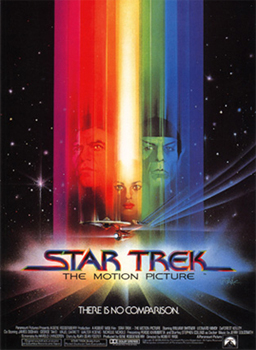 It certainly worked for the Hall crowd, who gave Adam Nimoy a standing ovation when he came out for a post-film discussion along with his producer David Zappone (the following comes from handwritten notes I scribbled as they spoke). Nimoy answered questions about the difficulty of the process of making the film, saying that finding the balance of himself, his father, and Spock was difficult with much editing work needed. He abjured the auteur theory at least for this film, insisting on the importance for him of his team of collaborators. On the other hand, he did find that people at Paramount were eager to co-operate with the production for the sake of Leonard Nimoy, letting him use video clips and music. The trick to distilling his material, he found, was to focus on the story of the film. Nimoy said that the movie, 112 minutes long in its final form, never exceeded two hours in any cut they tried.
It certainly worked for the Hall crowd, who gave Adam Nimoy a standing ovation when he came out for a post-film discussion along with his producer David Zappone (the following comes from handwritten notes I scribbled as they spoke). Nimoy answered questions about the difficulty of the process of making the film, saying that finding the balance of himself, his father, and Spock was difficult with much editing work needed. He abjured the auteur theory at least for this film, insisting on the importance for him of his team of collaborators. On the other hand, he did find that people at Paramount were eager to co-operate with the production for the sake of Leonard Nimoy, letting him use video clips and music. The trick to distilling his material, he found, was to focus on the story of the film. Nimoy said that the movie, 112 minutes long in its final form, never exceeded two hours in any cut they tried.
Asked about his father, Nimoy spoke about his drive, the courage he’d had to move across the country to look for work as an actor. Asked if he felt the documentary would have been different if his sister had done the documentary, as the film necessarily deals with the relationship of a father and a son, Nimoy said his sister is in fact working on her own documentary, on the disease that killed their father. He also said that it had been important for him to include her perspective on the family life.
Asked about the character of Spock, Nimoy said that his father had loved Spock, often reminding him that Spock was the only alien on the bridge of the Enterprise. The more specific you are in your art, he said, the more universal you become, and Leonard Nimoy had been very specific in who he was. To another question, producer Zappone said they could not have made the film without Kickstarter, which let them work without studio interference. The film drew 10,000 backers for the campaign, a record for Kickstarter backers.
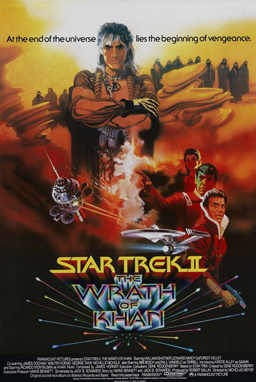 Asked how he found exactly the right moments in the original series to draw on for the film, Nimoy said he used his own extensive knowledge of the show. He observed that he was the target audience of the show, which he spent a lot of time watching over the years. He remembered how energised he was the first time he saw Star Trek on the cover of TV Guide, and said he still feels that way just as his father never became jaded by the show’s success.
Asked how he found exactly the right moments in the original series to draw on for the film, Nimoy said he used his own extensive knowledge of the show. He observed that he was the target audience of the show, which he spent a lot of time watching over the years. He remembered how energised he was the first time he saw Star Trek on the cover of TV Guide, and said he still feels that way just as his father never became jaded by the show’s success.
Zappone said in response to another question that the film would be in general release in a few months; Nimoy was then asked how involved the rest of the original cast was in the film, and he said that William Shatner in particular helped considerably, promoting the film and talking it up on social media (and observed incidentally that Shatner had cared greatly for Leonard Nimoy). He also cited George Takei as particularly critical to the film. Nimoy was then asked about how he had been able to go through so much material in only ten months; he answered that it became a part of his mourning process. In the end he was able to mourn his father while celebrating his greatest character at the same time.
With that the questions were finished, and the crowd filed out of the theatre. I promptly got in line for the next film, Takashi Miike’s Terraformars (or, in some sources, Terra Formars). Once the crowd for that movie had taken their places, we were able to see Miike presented with Fantasia’s Lifetime Achievement Award (you can see the presentation and post-film question-and-answer session here). Miike was praised by Fantasia organisers for his capacity to reinvent himself and push the limits of filmmaking. Mitch Davis, one of Fantasia’s two General Directors, praised Miike as the “living embodiment of cinematic invention.” Fantasia presented Miike’s North American debut, Fudoh, in 1997; over his career, the director has produced over 100 films, about 30 of which have played Fantasia. After a clip reel screened, the crowd gave Miike a standing ovation.
 Terraformars was directed by Miike from a script by Kazuki Nakashima, based on a manga written by Yu Sasuga and drawn by Kenichi Tachibana. Late in the twenty-first century humanity sends cockroaches to Mars as part of a project to terraform the planet. Five hundred years later, humanity’s ready to colonize Mars — but the cockroaches have evolved into fearsome warriors. The response of the Japanese government is to take several incorrigible criminals and ship them to Mars to kill the cockroaches. Surprises and twists begin almost at once, as the cockroaches turn out to be more formidable than anyone had guessed. But then the criminals turn out to have powers of their own. As the level of cartoonish violence reaches ever-more-unthinkable levels, secrets come out, hidden powers emerge, and conspiracies threaten the whole project.
Terraformars was directed by Miike from a script by Kazuki Nakashima, based on a manga written by Yu Sasuga and drawn by Kenichi Tachibana. Late in the twenty-first century humanity sends cockroaches to Mars as part of a project to terraform the planet. Five hundred years later, humanity’s ready to colonize Mars — but the cockroaches have evolved into fearsome warriors. The response of the Japanese government is to take several incorrigible criminals and ship them to Mars to kill the cockroaches. Surprises and twists begin almost at once, as the cockroaches turn out to be more formidable than anyone had guessed. But then the criminals turn out to have powers of their own. As the level of cartoonish violence reaches ever-more-unthinkable levels, secrets come out, hidden powers emerge, and conspiracies threaten the whole project.
The plot and characters here are cartoony, gloriously so. Power-ups are introduced with voice-over infodumps, costumes change to something out of the Mighty Morphin’ Power Rangers, and fight scenes grow larger, more vicious, and more improbable. The fights have consequences, though. Characters die unpredictably, and then some of them return when you least expect it. Everything moves at top velocity, as things go from bad to worse to worse than you can imagine to the worst possible — and then worse than that. Because the scale of problems keeps increasing, because the characters always feel like they’re clinging on to a rocket by their fingernails, the cartooniness never lacks drama. You’re always at least interested in the characters, at least enough to stay involved through the kinetic whirl of the film.
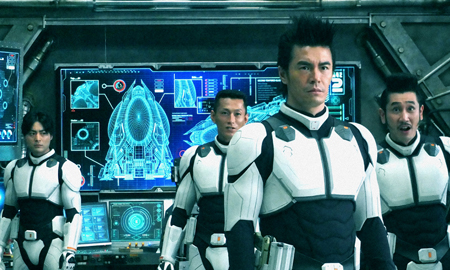 In some ways, the movie’s an effective rebuke to Hollywood filmmakers who insist that their super-hero movies need to be “grounded” in order for audiences to accept the story. Here, there’s an almost bloody-minded determination to push the story ever further, to make the images and metaphors ever broader. Miike understands that you can’t take a story about genetically-altered criminal supersoldiers fighting ultra-evolved cockroaches on Mars and try to play it down-to-earth. This movie doesn’t take place on Earth, it takes place on Mars, and so the violence is amped and all-out war declared on audience expectations. Miike commits to his story, however delirious it gets, while somehow never taking it too seriously.
In some ways, the movie’s an effective rebuke to Hollywood filmmakers who insist that their super-hero movies need to be “grounded” in order for audiences to accept the story. Here, there’s an almost bloody-minded determination to push the story ever further, to make the images and metaphors ever broader. Miike understands that you can’t take a story about genetically-altered criminal supersoldiers fighting ultra-evolved cockroaches on Mars and try to play it down-to-earth. This movie doesn’t take place on Earth, it takes place on Mars, and so the violence is amped and all-out war declared on audience expectations. Miike commits to his story, however delirious it gets, while somehow never taking it too seriously.
Which is not to say it’s perfect. Some of the cartooniness inevitably crosses the line into goofiness, although I think where that line is will vary with individual watchers. Conversely, the violence is uncompromising. I don’t recall much human gore, but heads get lopped off and death comes with abandon. As well, perhaps due to the frenetic pace, some plot points felt underdeveloped, notably in some of the broader conspiracies and in the development of the cockroaches. And I will say that the universe of the story felt unbalanced in terms of the physical space; it begins with a visually rich scene in a futuristic Japan that looks like a playing-about with Blade Runner, and then largely confines itself to the criminals’ Mars rocket, the arch-villain’s lair, and the surface of Mars. It’s both oddly large and too small to get a sense of the future.
 But then, this movie has nothing to do with detailed worldbuilding in that sense. It’s about the action, and the exploits on Mars are engagingly complex. Abilities are introduced and then expanded on, physical fight scenes are interspersed with super-powered CGI, and the slick pacing keeps the show going as the crew split up and quarrel among themselves. Structurally, it keeps doing things you don’t expect. It throws an absurd number of characters at the screen, culls the herd, then occasionally brings some of them back even while others drop. The villains are largely undifferentiated humanoids, and yet they keep coming up with new variations on the same basic threat.
But then, this movie has nothing to do with detailed worldbuilding in that sense. It’s about the action, and the exploits on Mars are engagingly complex. Abilities are introduced and then expanded on, physical fight scenes are interspersed with super-powered CGI, and the slick pacing keeps the show going as the crew split up and quarrel among themselves. Structurally, it keeps doing things you don’t expect. It throws an absurd number of characters at the screen, culls the herd, then occasionally brings some of them back even while others drop. The villains are largely undifferentiated humanoids, and yet they keep coming up with new variations on the same basic threat.
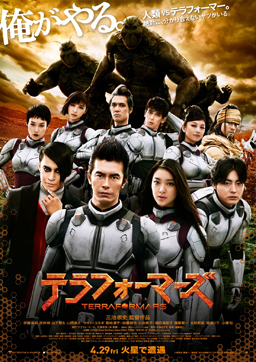 This is not a movie that asks you to turn off your brain, but is a movie that expects you not to take it too seriously. It’s filled with bright pop images and emotionally-fraught violence. The characters are simple, but that’s the point. The performances are over-the-top from start to finish, and everything here is unsubtle if not improbable, from make-up to visual effects to design. There is a deep irony here that coexists with the high-velocity yarn. And it works: the images here are so direct, so bright, so unapologetically improbable, that they leap off the screen.
This is not a movie that asks you to turn off your brain, but is a movie that expects you not to take it too seriously. It’s filled with bright pop images and emotionally-fraught violence. The characters are simple, but that’s the point. The performances are over-the-top from start to finish, and everything here is unsubtle if not improbable, from make-up to visual effects to design. There is a deep irony here that coexists with the high-velocity yarn. And it works: the images here are so direct, so bright, so unapologetically improbable, that they leap off the screen.
What’s it all about? Well, there is a modish cynicism about government and human society in this movie, which works — the crew we’re following are a bunch of criminals, after all. There is also at least notionally an overall theme about transformation and evolution; or at least enough of one to hang the narrative on. This is not intellectual science-fiction cinema, but a knowing pastiche of space opera that nods to Starship Troopers as well as Blade Runner and any number of other predecessors. I cannot imagine that it’d be to everyone’s taste. But for those willing to suspend disbelief to absurd levels, indeed for people who take pleasure in pushing that suspension, this movie is a terrifically effective ride.
Miike returned after the film for a question-and-answer session with the audience; again, you can find the video of that talk here, though much of it is in French and Japanese, but I’ll highlight a few points in particular. Asked about the genesis of the film, Miike said that he wanted to try to make a film which used a lot of CGI. Asked about the story of the film, Miike said that the movie was based on the original manga, of which he was a fan. He wanted to be faithful, but also wanted the script to condense the original.
 Asked if there were any genres he was eager to explore, Miike said that he didn’t think in terms of genre — and added (speaking as he was through a translator) that he still hasn’t come to grasp the meaning of the word. He said he only really thinks about it when people ask him what genre of movie he’s working on. In his mind, all genres are interconnected. He didn’t think of Terraformars as science-fiction; he’d just thought it would be fantastic to see a movie in which a couple of Yakuza guys had a smoke break on Mars. He didn’t consider the genre of the film beyond that.
Asked if there were any genres he was eager to explore, Miike said that he didn’t think in terms of genre — and added (speaking as he was through a translator) that he still hasn’t come to grasp the meaning of the word. He said he only really thinks about it when people ask him what genre of movie he’s working on. In his mind, all genres are interconnected. He didn’t think of Terraformars as science-fiction; he’d just thought it would be fantastic to see a movie in which a couple of Yakuza guys had a smoke break on Mars. He didn’t consider the genre of the film beyond that.
Asked if the opening scenes of Terraformars was an homage to Ridley Scott, Miike agreed, and spoke about his respect for Scott, and how he’d been moved and touched by Blade Runner. Those scenes were him trying to express in his own way what he’d seen. However, Miike felt there were some shortcomings, that the scenes couldn’t help but become parodic, for all the respect he had for Scott. Finally, asked what it was like being able at last to see one of his movies at Fantasia, Miike emphasised how grateful he was from the bottom of his heart for the programmers playing so many of his films, to the festival, and to the audiences. He closed by thanking the audience for their presence, and for sticking around to the end of his talk.
Again, a full day. Two Japanese science-fiction films that in different ways recalled genre films of the 1980s. A documentary about science-fiction, and a film that used the documentary form. It felt like the day had been about genre conventions and their reinvention, about the dreamlike power of film, about identification with the inhuman. It had been, in all, spectacular. And after a too-short sleep, I’d get to wake up and do it again the next day.
(You can find links to all my Fantasia 2016 diaries here.)
Matthew David Surridge is the author of “The Word of Azrael,” from Black Gate 14. You can buy his first collection of essays, looking at some fantasy novels of the twenty-first century, here. His second collection, looking at some fantasy from the twentieth century, is here. You can find him on Facebook, or follow his Twitter account, Fell_Gard.